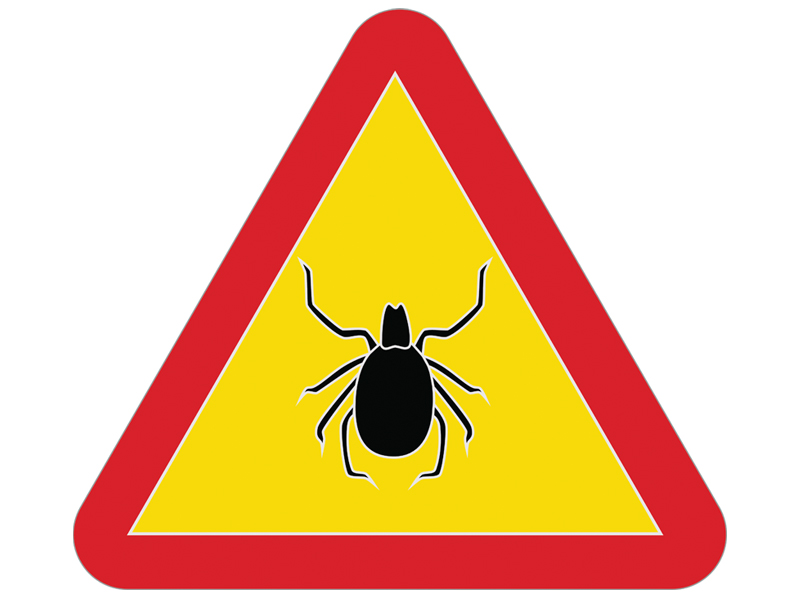Get Easy Health Digest™ in your inbox and don’t miss a thing when you subscribe today. Plus, get the free bonus report, Mother Nature’s Tips, Tricks and Remedies for Cholesterol, Blood Pressure & Blood Sugar as my way of saying welcome to the community!
Avoid Lyme disease during tick season

Like people, ticks love the warm weather, which makes spring and summer “tick season.”
In the United States alone, Lyme disease strikes an estimated 200,000 to 300,000 people each year, which is 10 times higher than it was previously reported. If it is detected early, most courses of treatment entail a heavy round of antibiotics. However, delayed diagnosis and treatment can lead to chronic, exhausting symptoms that can persist for years.
The culprit
Lyme disease is caused by a specific type of bacteria: Borrelia burgdorferi, which is carried by infected deer ticks. Lyme disease is identified in its initial stages by a telltale “bulls-eye” rash at the site of the tick bite. When the condition progresses, it comes with an extensive list of difficult and often debilitating symptoms. Some of those symptoms include severe headaches, flu symptoms, fatigue, joint pain, heart palpitations, dizziness, paralysis of facial muscles and many others.
Unfortunately, the rash can sometimes be hidden or it may not appear at all. In these cases, diagnosis is often delayed or missed completely until much later when the infection has become chronic.
In many Lyme cases, there are problems with misdiagnosis due to nonspecific symptoms and insensitive diagnostic testing. Therefore, it is so important to be vigilant about full body tick checks after spending any time in natural tick habitats. Early detection is key. Some experts assert that the tick needs to be embedded for 24 hours to transmit the infection. If you perform a tick check and practice other preventative methods, like tucking your pants into socks and using a natural tick repellant, you can prevent the potential infection.
Treatment
If the infection is caught early, antibiotics can be effective. However, the Lyme disease bacterium likes to hide inside cells and tissue, making treatment difficult. Once the bacterium gets inside the body, it has the ability to change its outer-cell-wall proteins, effectively hiding itself from the immune system. This is further complicated by the shortcomings of diagnostic tests, which tend to be more accurate three weeks or more after infection. False negatives are also common — even in late-stage infections — delaying or confusing detection.
When this happens and treatment is delayed, for whatever reason, Lyme disease can evolve into its chronic form. This can lead to several inflammatory and degenerative processes in the body, particularly in the musculoskeletal and nervous systems. Additionally, the bacteria can develop antibiotic resistance, and even hide in the brain, where the blood/brain barrier blocks out antibiotics. Over time, Lyme disease can significantly impair the immune system, making people vulnerable to several co-infections like HSV (herpes simplex virus), strep throat, Candidiasis along with other opportunistic pathogens that can take up permanent residence.
Since Lyme disease presents itself differently in each person, most health practitioners can’t agree on a specific treatment protocol. It can be treated with antibiotics, but there are other issues to consider during treatment like impaired immunity, inflammation, neurological damage, heavy metal body burden and co-infections. The most efficient treatment plan is an integrative holistic approach that considers all of these circumstances.
The big picture
The CDC recently released some stunning data: There are more people affected with Lyme disease each year than breast cancer. Based on that information, you or someone you know is affected by Lyme Disease.
Some epidemics get a lot of press like bird flu, SARS, H1N1 and other viral outbreaks that plague public consciousness. But while these are real concerns, Lyme disease doesn’t get the adequate attention it deserves as it is a rising public health concern in the USA.
A tiny tick bite can easily change someone’s life and become their worst nightmare.
Note: There is more that can be done to combat this silent epidemic. Join integrative medicine expert Isaac Eliaz, MD, MSc, LAc at the Chronic Lyme Disease Summit as he discusses groundbreaking clinical approaches to Lyme disease treatment and recovery. Trained in multiple medical modalities including Western, Traditional Asian, and Homeopathic, Dr. Eliaz offers a unique model for treating Lyme disease with innovative protocols based on a holistic understanding of the relationships between the patient, the infection, and the multiple co-factors involved in this widespread problem.
Discover your path to an active and happy life. Don’t miss this critical information that will change lives. Register for the Chronic Lyme Disease Summit today.












